LIONEL CLASSIC PERIOD ELECTRIC LOCOMOTIVES
THE FOLLOWING LIONEL No. 251 ELECTRIC LOCOMOTIVES WILL BE DOCUMENTED BELOW
Click or Scroll Down
GENERAL INFORMATION
No. 251 Electric Locomotive in gray (1925-1926)
No. 251 Electric Locomotive in gray (1926-1927)
No. 251 Electric Locomotive in gray (1927-1928)
No. 251E Electric Locomotive in gray (1927-1928)
No. 251E Electric Locomotive in gray (1928-1929)
No. 251 Electric Locomotive in red (1930)
No. 251E Electric Locomotive in red (1930-1932)
No. 251E Electric Locomotive in red (1930-1932)
No. 251E Electric Locomotive in olive green (1929-1930)
Lionel No. 251 Electric Locomotives
General Information
The Lionel No. 251 Electric Locomotive was introduced in 1925 and was issued through 1932. This 0-4-0 Electric Locomotive was one of three box cab electric locomotives issued by Lionel during the Classic Period. The No. 251 Locomotive resembles the Pennsylvania Railroad B-1 and the New York Central T1. The No. 251 was one of the largest of the electric locomotives issued by Lionel during the Classic Period. This locomotive was included as a component of many larger passenger and freight prewar sets. Due to the size and cost of the No. 251 Locomotive, it was not typically included in uncataloged or “Special” sets.
The No. 251 Electric Locomotive measures 10-inches in length. All have two headlights located on the roof at the ends of the locomotive. The headlights are directional and are only illuminated corresponding to the direction of travel. The No. 251 Locomotive had a manual reverse which was controlled by a lever through the body. The “Lionel” and “251” plates had black lettering. The No. 251E Locomotive had a remotely operated reverse. It also had a lever through the body that engaged or disengaged the reversing unit. The “Lionel” and “251E” plates typically had red lettering. All No. 251E Locomotives utilized Lionel’s pendulum reverse unit. None were issued with an E-unit reverse.
Variations of the No. 251 Electric Locomotives include the evolution of the drive wheels from spoked to disc and the headlights from strap to cast. Other notable variations include body color and brass versus painted window inserts. All of the No. 251 Locomotives had black frames, brass air tanks, and nickel leaf springs.
No. 251 Electric Locomotives descriptive index
No. 1 No. 251 Electric Locomotive in gray (1925-1926). Locomotive had strap headlights, brass window inserts, and spoked drive wheels. This locomotive also had a nickel pantograph and whistle.
No. 2 No. 251 Electric Locomotive in gray (1926-1927). Locomotive had strap headlights, red window inserts, and spoked drive wheels
No. 3 No. 251 Electric Locomotive in gray (1927-1928). Locomotive had cast headlights, red window inserts, and disc drive wheels.
No. 4 No. 251E Electric Locomotive in gray (1927-1928). Locomotive had cast headlights, brass window inserts, and disc drive wheels. This locomotive had a pendulum reverse.
No. 5 No. 251E Electric Locomotive in gray (1928-1929). Locomotive had cast headlights, red window inserts, and disc drive wheels. This locomotive had a pendulum reverse.
No. 6 No. 251 Electric Locomotive in red (1930). Locomotive had cast headlights, cream window inserts, and disc drive wheels. This locomotive also had a cream stripe at the base of the body.
No. 7 No. 251E Electric Locomotive in red (1930-1932). Locomotive had cast headlights, cream window inserts, and disc drive wheels. This locomotive had a pendulum reverse.
No. 8 No. 251E Electric Locomotive in red (1930-1932). Locomotive had cast headlights, cream window inserts, and disc drive wheels. This locomotive had a pendulum reverse. This locomotive also had a cream stripe at the base of the body.
No. 9 No. 251E Electric Locomotive in olive green (1929-1930). Locomotive had cast headlights, red window inserts, and disc drive wheels. This locomotive had a pendulum reverse. This locomotive may have been a test color since only one example has been reported.
Lionel No. 251 Electric Locomotives
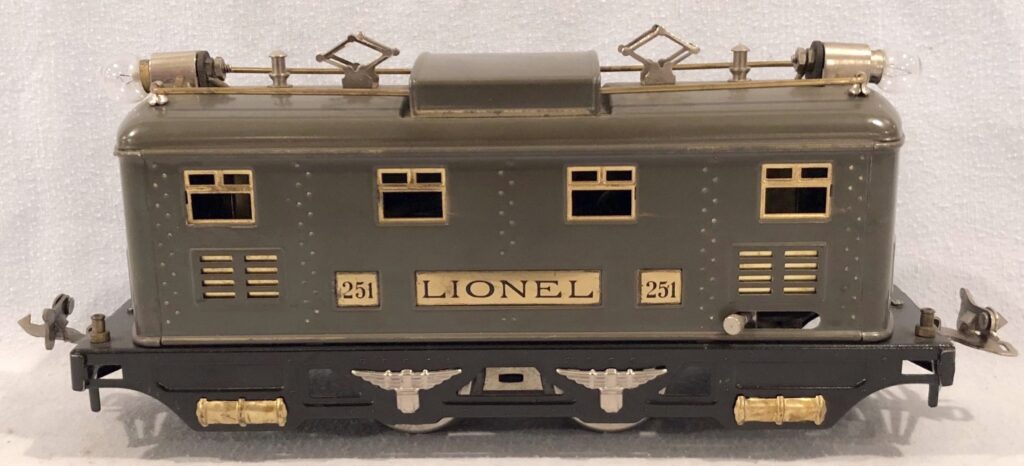
No. 1 No. 251 Electric Locomotive in gray (1925-1926). Locomotive had strap headlights, brass window inserts, and spoked drive wheels. This locomotive also had a nickel pantograph and whistle.

Courtesy of “The MacNair Collection”
No. 2 No. 251 Electric Locomotive in gray (1926-1927). Locomotive had strap headlights, red window inserts, and spoked drive wheels
PHOTO NEEDED
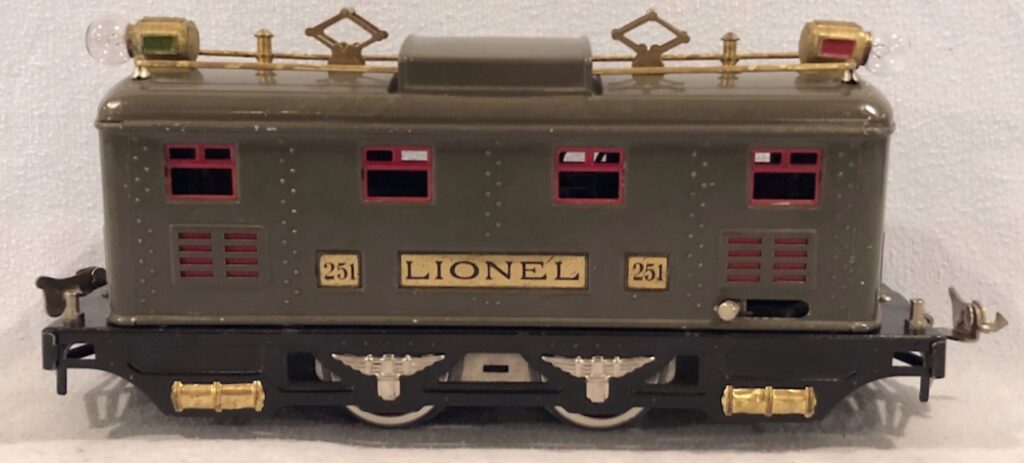
No. 3 No. 251 Electric Locomotive in gray (1927-1928). Locomotive had cast headlights, red window inserts, and disc drive wheels.

Courtesy of “The MacNair Collection”
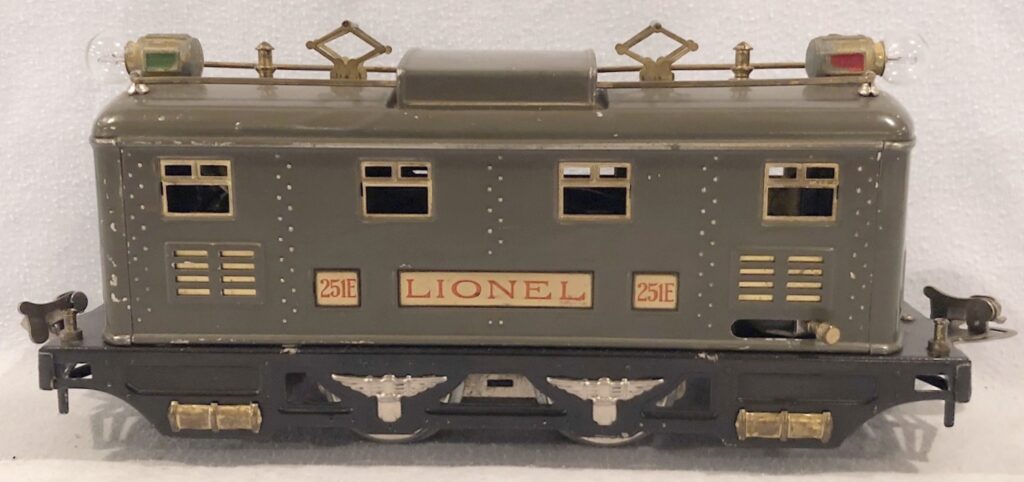
No. 4 No. 251E Electric Locomotive in gray (1927-1928). Locomotive had cast headlights, brass window inserts, and disc drive wheels. This locomotive had a pendulum reverse.
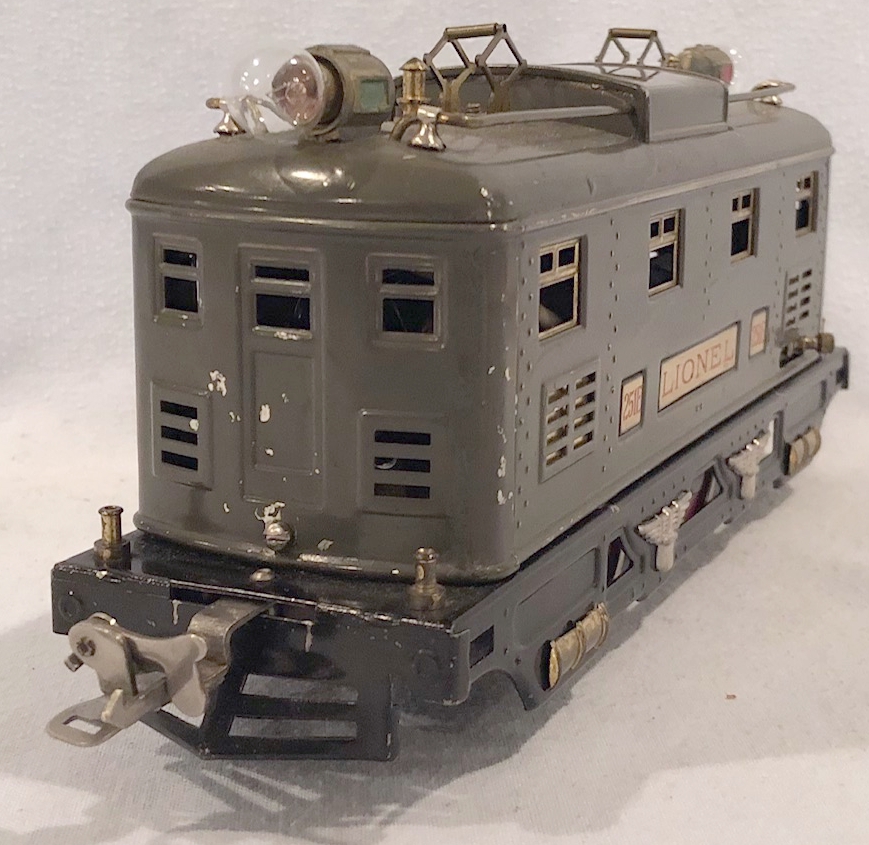
Courtesy of “The MacNair Collection”
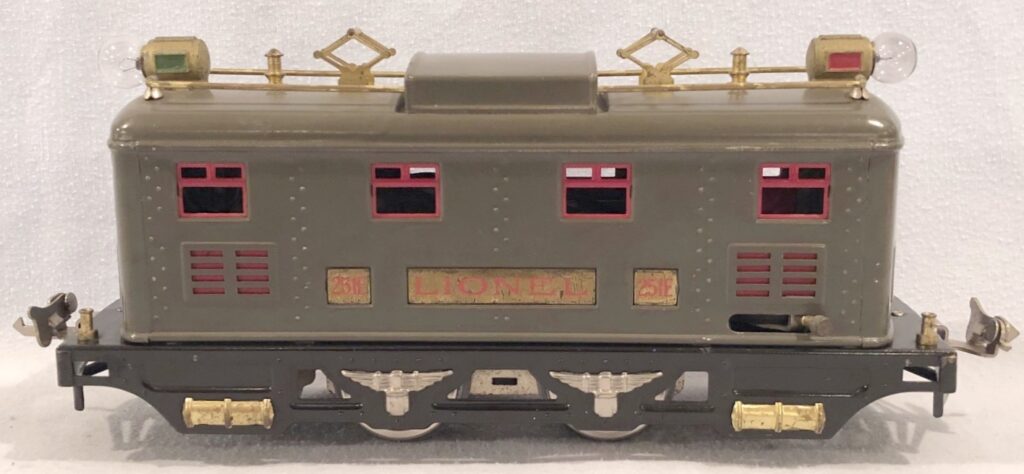
No. 5 No. 251E Electric Locomotive in gray (1928-1929). Locomotive had cast headlights, red window inserts, and disc drive wheels. This locomotive had a pendulum reverse.
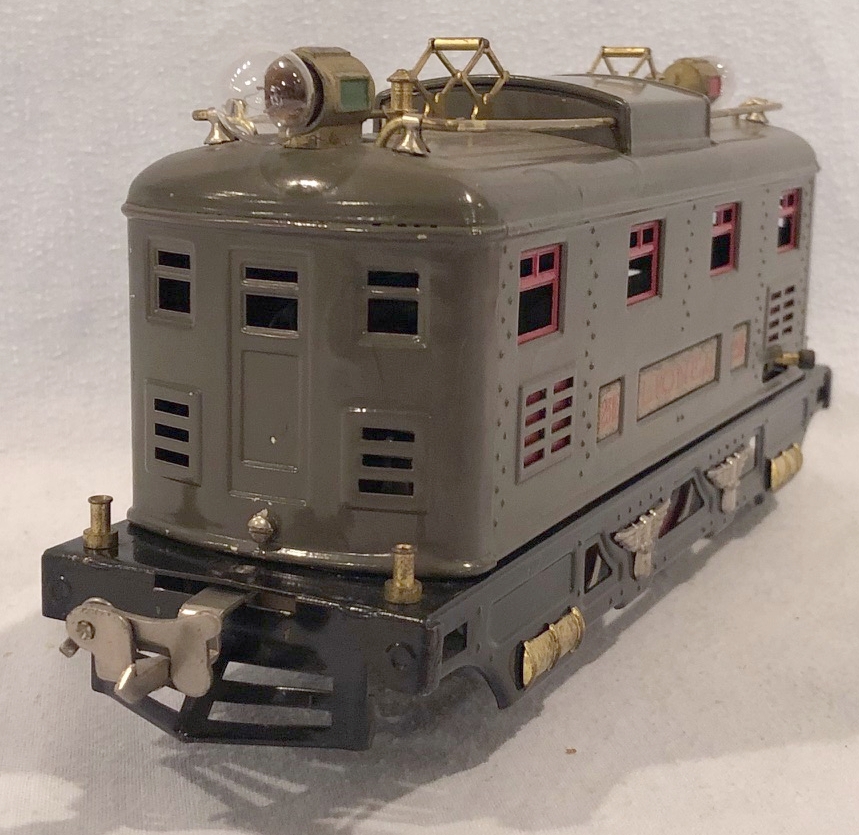
Courtesy of “The MacNair Collection”
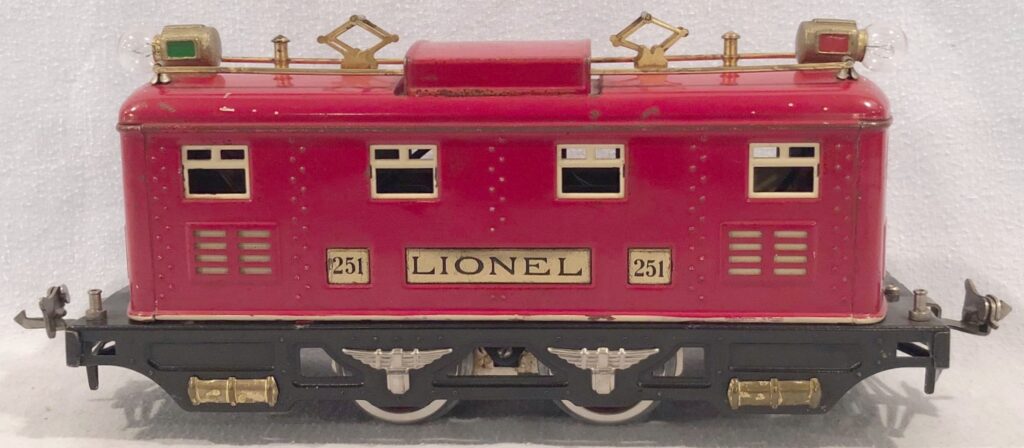
No. 6 No. 251 Electric Locomotive in red (1930). Locomotive had cast headlights, cream window inserts, and disc drive wheels. This locomotive also had a cream stripe at the base of the body.
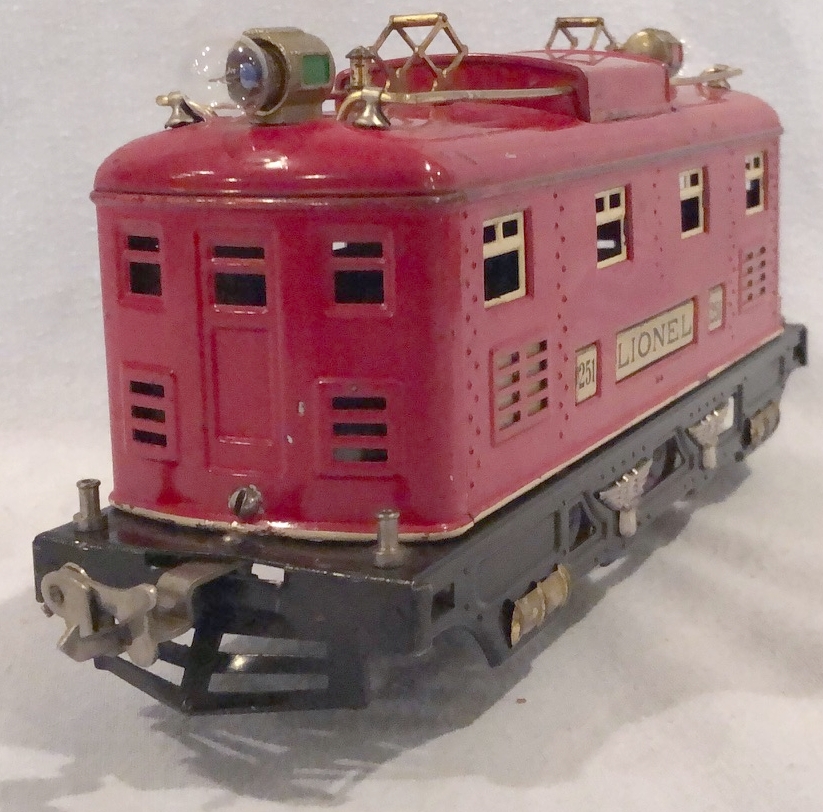
Courtesy of “The MacNair Collection”
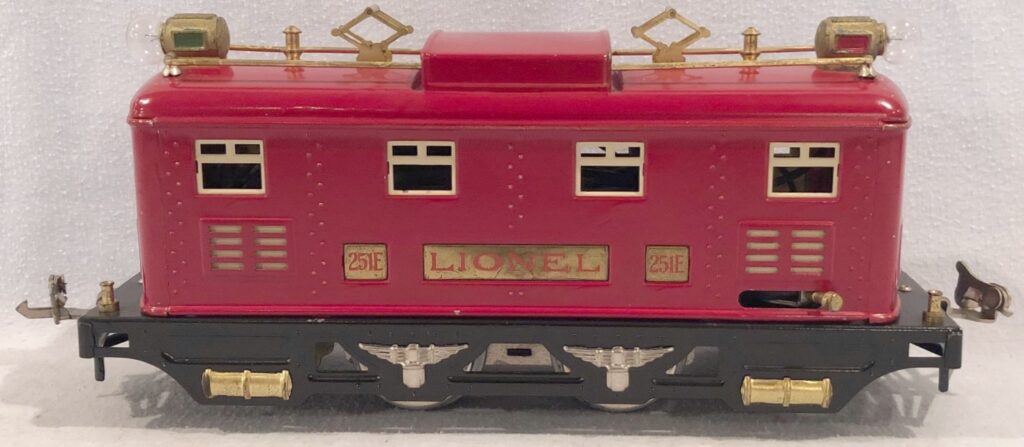
No. 7 No. 251E Electric Locomotive in red (1930-1932). Locomotive had cast headlights, cream window inserts, and disc drive wheels. This locomotive had a pendulum reverse.
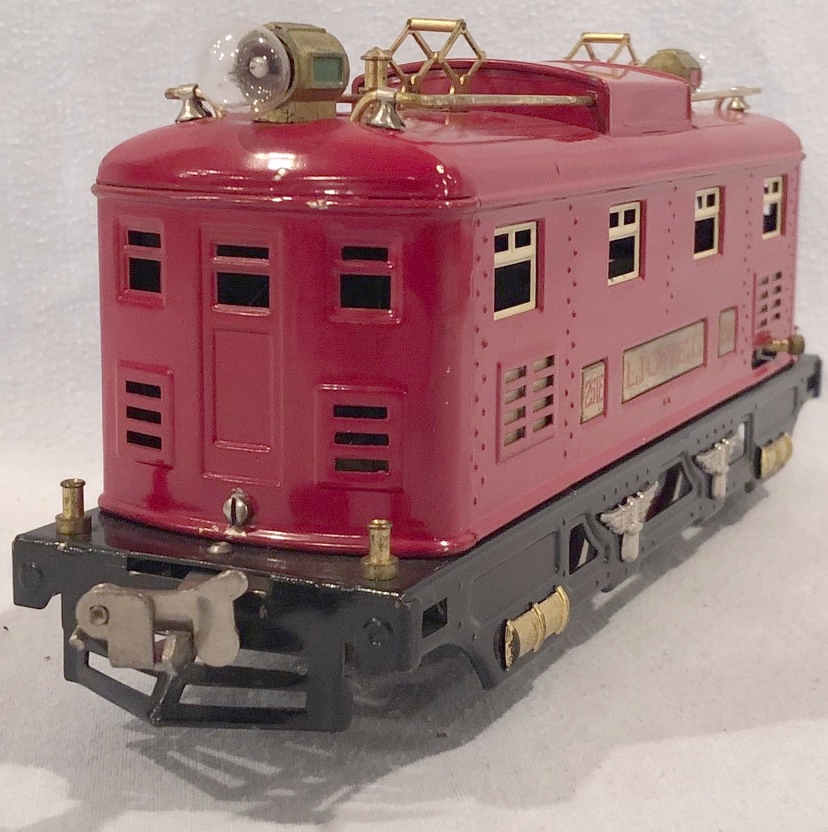
Courtesy of “The MacNair Collection”
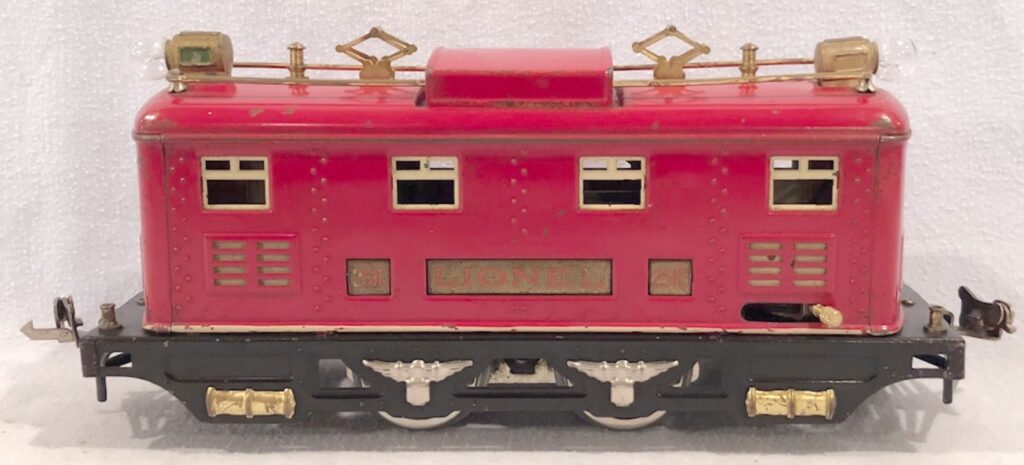
No. 8 No. 251E Electric Locomotive in red (1930-1932). Locomotive had cast headlights, cream window inserts, and disc drive wheels. This locomotive had a pendulum reverse. This locomotive also had a cream stripe at the base of the body.

Courtesy of “The MacNair Collection”

No. 9 No. 251E Electric Locomotive in olive green (1929-1930). Locomotive had cast headlights, red window inserts, and disc drive wheels. This locomotive had a pendulum reverse. This locomotive may have been a test color since only one example has been reported.
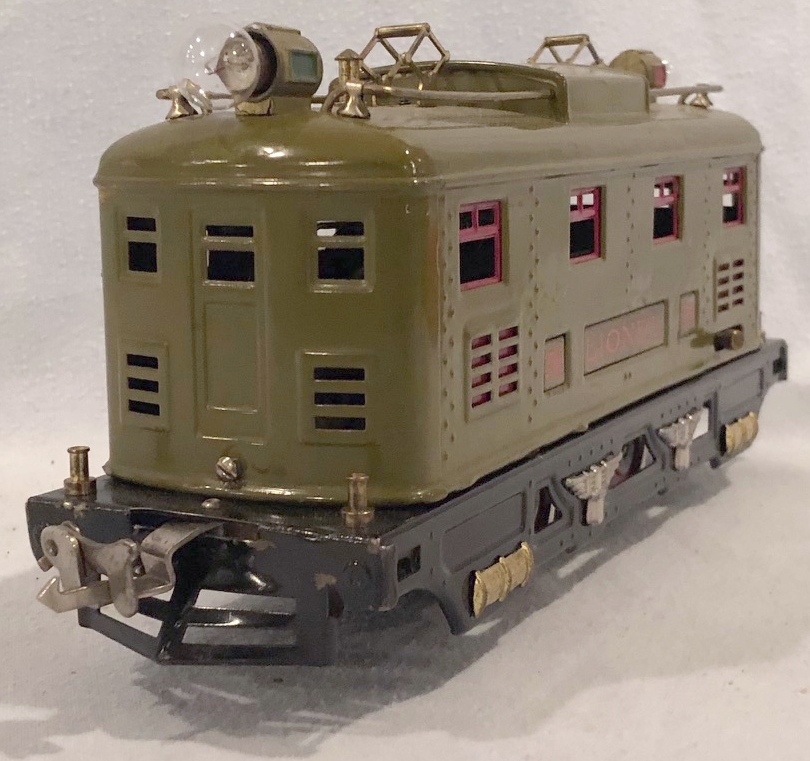
Courtesy of “The MacNair Collection”
WHERE WOULD YOU LIKE TO GO NEXT ?


